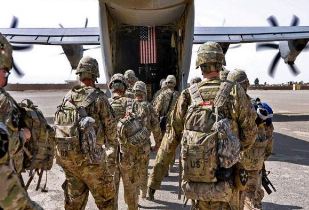By Abdul Waheed Waheed
Recent U.S. policy signals point toward a potentially disruptive new phase in Afghanistan’s fragile political landscape. The U.S. House of Representatives has approved an amendment to the 2026 National Defense Authorization Act, instructing the Pentagon to share intelligence with remnants of the former Afghan army, police units, and other designated resistance forces in order to counter the Taliban.
Simultaneously, President Trump has publicly declared his intention to reclaim Bagram Air Base, emphasizing its strategic location near China’s nuclear facilities. Taken together, these moves suggest that Washington’s interest in Afghanistan is being rekindled—not solely for counterterrorism purposes but also for broader geostrategic calculations involving China’s rise and Afghanistan’s vast mineral wealth.
Trump’s claim that America must hold Bagram to “check China” resonates with his political base, but the reality is far more complex. On the surface, reoccupying Bagram fits neatly into his narrative of strength: the U.S. lost it in a “shameful” withdrawal in 2021, and regaining it would restore pride while countering Beijing’s influence. Yet translating this rhetoric into reality would mean violating Afghanistan’s sovereignty, navigating a hostile Taliban-led government, and risking another open-ended military entanglement. It would also provoke direct tensions with China, Russia, and other regional powers that now view Afghanistan as part of their security sphere. Trump’s bold framing masks the deeper geopolitical consequences of such a move.
Although Washington retains overwhelming military power, history shows that conquering territory is far easier than sustaining it. Bagram, both symbolic and strategic, has humbled great powers before. The Soviets held it in the 1980s, and the U.S. occupied it for two decades, yet neither succeeded in converting military presence into durable political control. Afghanistan’s unforgiving geography, fractured politics, and fiercely independent people have long resisted foreign domination. Even if Washington were to reestablish a foothold at Bagram, maintaining it would demand immense political will, vast financial resources, and, above all, local legitimacy—none of which are assured after America’s chaotic 2021 withdrawal. The true challenge lies not in seizing territory, but in governing and sustaining influence in a land that has historically defied external rulers.
Meanwhile, the Taliban continue consolidating power at home. From Kandahar to Badakhshan, they have restored a measure of order, curtailed corruption, and established a functioning—if harsh—system of justice. Yet international recognition remains elusive, while relations with Pakistan are fraught. The unresolved Durand Line, decades of mistrust, and Pakistan’s persistent interference collide with the Taliban’s anti-Pakistan rhetoric, creating a cycle of hostility that undermines regional stability.
The U.S. decision to share intelligence with anti-Taliban forces further complicates the situation. Framed as counterterrorism support, it bolsters resistance groups, undermines the Taliban’s domestic authority, and risks reigniting civil conflict. Coupled with Pakistan’s strategic maneuvers, these developments threaten to destabilize a country whose people are weary of endless war. Ordinary Afghans, hardened by decades of conflict, remain determined to resist any renewed attempt—by a superpower or a neighbor—to impose turmoil on their land.
Regional dynamics add another layer of fragility. The Taliban claim to restrict militant activity, yet neighbors—including Pakistan, China, Iran, and Uzbekistan—remain deeply concerned about foreign fighters finding refuge on Afghan soil. The failure of the August 20 trilateral meeting of China, Afghanistan, and Pakistan to issue a joint communiqué underscored both the limits of Taliban control and the difficulty of forging regional consensus on counterterrorism.
Afghanistan’s challenges are therefore not merely internal but deeply entangled with regional rivalries and global power plays. For the Taliban, the test lies in consolidating authority at home while engaging constructively with neighbors and demonstrating tangible commitments to counterterrorism. For the United States, the dilemma is whether backing anti-Taliban forces can genuinely produce stability—or risks plunging Afghanistan into renewed conflict. For Pakistan, the imperative is to abandon short-term proxy strategies and work toward durable, mutually beneficial relations that prioritize stability over leverage.
Afghanistan once again stands at a crossroads. Whether it consolidates fragile peace or slides back into turbulence depends on the actions of the Taliban, the United States, Pakistan, and other regional powers. But above all, it depends on the Afghan people—who, after generations of conflict, demand peace, stability, and economic security. Any external maneuver that ignores these aspirations is likely to face resistance from the very population it claims to protect.
A pragmatic way forward requires responsibility on all sides. The Taliban must move beyond rhetoric and implement credible steps toward fulfilling the Doha Agreement. The United States must resist the temptation of unilateral intelligence operations that risk reigniting proxy wars, instead investing in diplomacy, economic incentives, and reconstruction. Pakistan must reckon with its history of miscalculations, recognizing that long-term stability lies not in grievances or militant leverage, but in fostering cooperation.
History has shown that Afghanistan resists being reduced to a chessboard for external ambitions. Respecting that truth—and the resilience of its people—is central to shaping a stable and sustainable future.

















